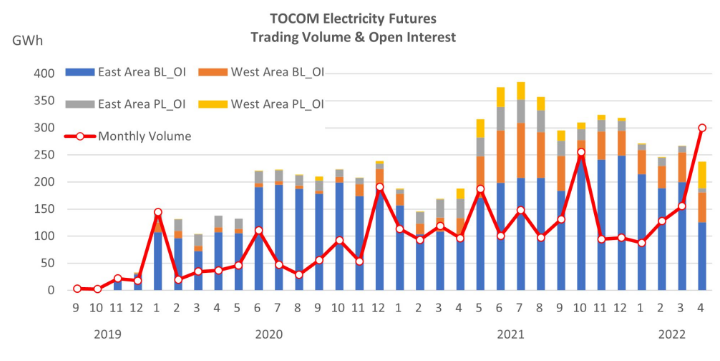TOCOM Energy
Renewed optimism around oil demand from China
Oil prices started the month on a bullish footing, with middle east benchmark Dubai Cash for May breaking above 83 $/b as strong data from China and Russia supply cut outweighed fears of rate hikes.
Crude oil futures Friday pared a sharp drop and were largely consolidating the week’s gains as UAE officials say there are no plans to leave OPEC and will stick to the production quotas for at least another year. Intermonth spread however, lost upward momentum with the M1/M3 spread of major crude oil benchmarks settled lower by the European close.
On the demand side, sentiment has been supported by renewed optimism around demand from top oil importer China.
According to China’s National Bureau of Statistics, China’s PMI was reported at 51.6 last month, up from 49.2 in January, with a number above 50 indicating an expansion in activity.
For the manufacturing sector, the index shot up to 52.6 from 50.1 in January, Measures of production, exports and new orders all rose. The PMI reading far exceeded an analyst forecast of 50.5 and was the highest reading since April 2012 which are feeding the narrative that a 2023 China recovery is the real deal and this could be the start of an upward trend for oil.
In the physical market, China’s global crude oil buying spree is seen extending into this month.
It reported that Unipec and PetroChina have both hired ten supertankers each with a capacity of up to 2 million barrels in March to haul US crude back to Asia. Traders are also back on the market for Russian crude. A stronger demand has seen offers for April-delivery ESPO to China’s independent teapot refiners in Shandong province, with rise to discounts of around $7-$7.50/b against June ICE Brent futures on a DES basis according to S&P Global.
On the other hand, macro data and hawkish Fed speakers continued to highlight inflation fears are here to stay and sparking some demand concerns.
The US ISM manufacturing marginally rose to 47.7 from 47.4, coming in below expectations of 48.0. New orders lifted to 47.0, while employment fell to 49.1, entering contractionary territory. ISM priced paid rose back into expansionary territory to 51.3, well above the prior 44.5 and the expected 45.1. The euro zone inflation also fell less than expected last month, re-affirming that it may be too soon to call goods inflation disinflationary.
On the supply side, OPEC’s crude oil production for February was, on average, 150,000 bpd more than it was in January, according to a Reuters survey. The group slowly raised its production targets last year as demand increased but consistently failed to meet its monthly production targets. For the ten OPEC members that are part of the wider OPEC+ agreement, February production was 880,000 bpd below its targets. This is closer to their target than they were in January when they produced 920,000 bpd less than their target.
The market shrugged off a 10th consecutive week of crude stock builds in the U.S. as more evidence of surging demand for U.S. crude oil barrels on the global market could be found in the latest EIA weekly report. US exports of crude oil have surged to record high, while a still flat production level and a rise in refinery demand ahead might keep the inventory build smaller than in recent weeks.






